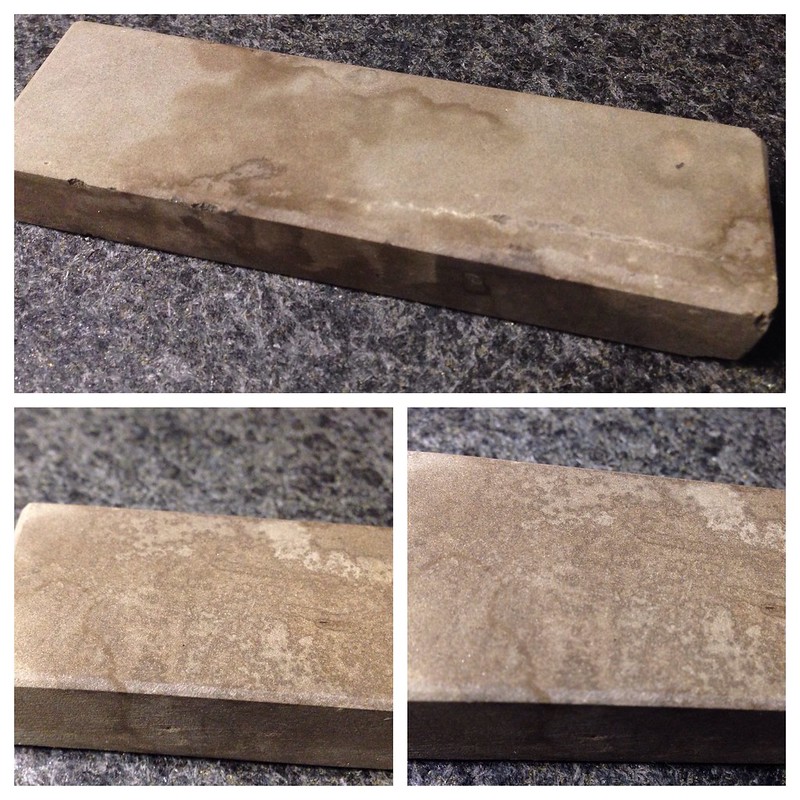I picked this stone up at a local flea market a few weeks ago as a mystery hone - so filthy there was no telling what it was. Now that I have cleaned it up I still have no clue! Any ideas? If you are reading this Sebastian or Peter, on slurry it quite reminds me of the Frankonian. It cuts fast as heck and leaves a bit coarser finish - maybe 4 to 6kish. After about 150 or 200 laps cutting speed drops off and it polishes a little more. Haven't done too much playing with it yet as far as trying straight water or oil yet. Also, lots of sparklies in the stone, you should be able to see them in at least some of the pics. Slurry has a touch of reddish to it, about the same as the pic shows. The stone is not hard, not soft, right in the middle. About the same as a medium-hard JNat.
Sunlight pics


End saw cut

Wet

Slurried with DMT

Sunlight pics
End saw cut
Wet
Slurried with DMT
Last edited:





